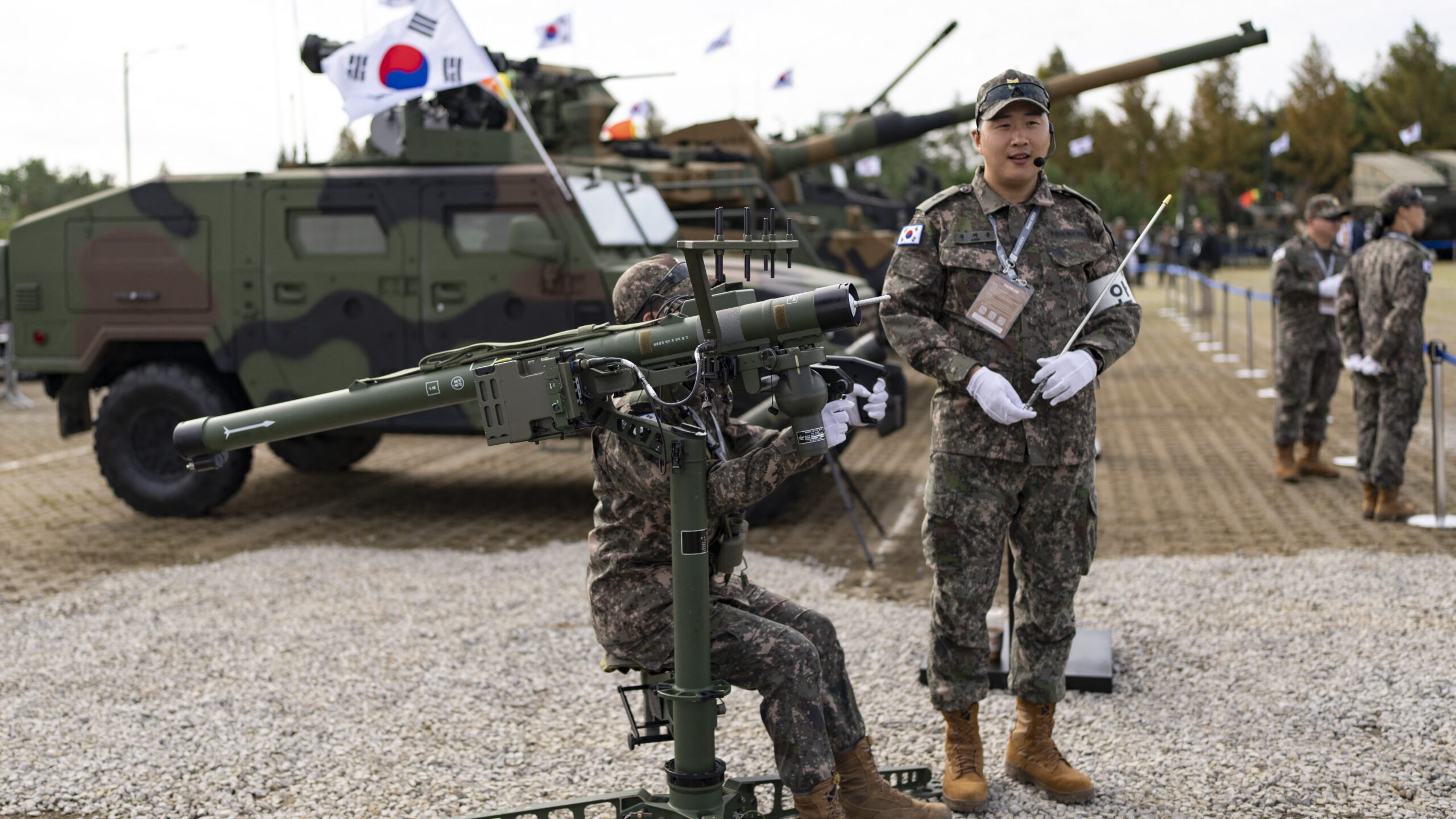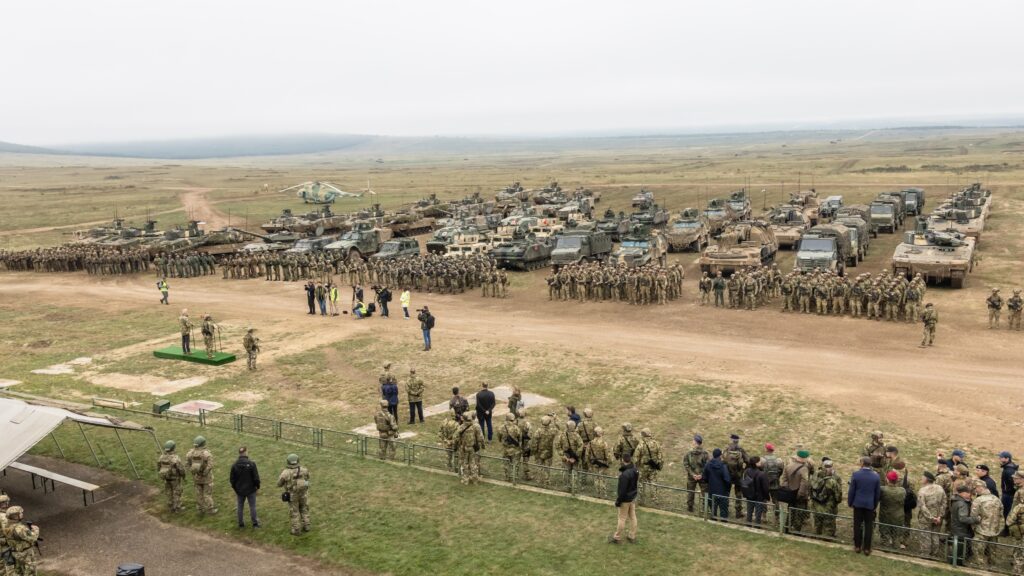Held biennially, the ADEX security conference is a high-profile strategic showcase for cutting-edge military and security technologies, serving both as a parade of defence innovation and a hub for regional security cooperation.
This year, however, it was even more than that.
During the opening ceremony, the South Korean President delivered a keynote speech announcing a new era: the Republic of Korea does not merely intend to keep pace with advances in the defence sector—it intends to lead them.
According to this vision, South Korea’s official goal is to become the world’s fourth-largest defence industry actor by 2030, positioned directly behind the United States, Russia, and China. The speech made it clear that this is not just about economic ambition.
He also said that defence exports and technological development are part of a national strategy. This is a way of strengthening geopolitical posture and expanding alliance networks. In many respects, it reflects an ambition toward limited great-power status by a country of over 50 million people—a goal that, while bold, is backed by credible industrial capacity, technological innovation, and a rapidly maturing defence ecosystem.
Over the past decade, South Korea has steadily evolved into one of the most dynamic players in the global defence market. This transformation has been fuelled by economic foresight, security concerns and social innovation. ADEX 2025 vividly reflects this transition: Seoul is not just talking about a ‘high-tech defence nation’—it is methodically building one, through synchronized efforts in manufacturing capacity, R&D, and alliance policy.
South Korea’s defence budget has remained stable in recent years, amounting to roughly 2.5–3 per cent of GDP—higher than most NATO members. The industry is geared not only toward domestic needs but also toward export-based growth.
Between 2021 and 2024, South Korea became the world’s ninth-largest arms exporter (2.2 per cent global share), bolstered by the success of the K2 main battle tank, K9 self-propelled howitzer, FA-50 light combat aircraft, and various missile systems.
Major procurement deals, particularly those with Poland, Norway, and Australia, have demonstrated that Korean technology is competitive, scalable, and can be delivered rapidly—all of which are in exceptionally high demand in today’s geopolitical climate. Consequently, revenues among Korea’s four leading defence companies rose by 39 per cent between 2022 and 2023.
In 2024 defence spending reached 2.6 per cent of GDP (USD 47.6 billion), and the Lee administration has pledged an additional 8.2 per cent increase by 2026—making South Korea a stable member of the global defence Top 10.
Technological Autonomy and the ‘K-Defence’ Strategy
In 2023 the government announced the Defence K-Tech strategy, aiming to digitalize the defence sector and create an innovation-driven ecosystem. This approach supports not only heavyweight companies such as Hanwha, KAI, and LIG Nex1, but also hundreds of startups and university research centres.
The strategy rests on three pillars:
- High-Tech defence manufacturing — modular, rapidly adaptable automated production;
- AI-driven systems — autonomy-capable decision support algorithms integrated into platforms;
- Smart Export Policy — financing and partnership tools to accelerate international proliferation.
Essentially, Defence K-Tech applies the logic of the cultural ‘K-Wave’ to the defence industry: Korean technology should be both reliable and valuable as a brand.
The primary factor influencing South Korea’s defence strategy is the unpredictability of North Korea’s military policy. By the mid-2020s, due to North Korea’s continuous missile launches, drone tests, and cyber operations, South Korea cannot afford to remain strategically passive.
Simultaneously, Seoul is integrating deeper into the Indo-Pacific security architecture centred on the United States, Japan, and Australia.
The partnership with the US remains essential: major joint exercises such as Vigilant Storm and Ulchi Freedom Shield, as well as technological cooperation, especially in the areas of the KF-21 and missile systems, deepen trust. Nevertheless, South Korea is increasingly cultivating a distinct strategic identity that balances alliances with the development of its own capabilities.
Regional power competition, intensified by China’s rise and Japan’s remilitarization reforms, further reinforces Seoul’s resolve.
‘South Korea does not intend to be a follower, but rather a shaper of tomorrow’s defence technology landscape’
In this context, ADEX 2025 is not just an exhibition; it is also a demonstration of intent. South Korea does not intend to be a follower, but rather a shaper of tomorrow’s defence technology landscape. Prominent US companies such as Lockheed Martin, Northrop Grumman, and Raytheon were present, signalling deepening industrial ties.
Pioneering Human-Machine Teaming and Defence Integration
One of the most striking demonstrations was the collaboration between Korean Air and Anduril Industries to develop an AI-based autonomous pilot system, offering a glimpse into the future of human-machine teamwork. Bringing together Korean integration expertise and American autonomy solutions, the project’s goal is not to replace pilots, but rather to provide hybrid control architectures that support human decision-making, foreshadowing a next generation of unmanned operations.
Walking the exhibition floor, it was clear that South Korea intends to weave itself into global defence supply chains while leading in key niches: drone swarming, air defence, and air-combat systems.
Hanwha Aerospace played a key role in showcasing multiple variants of the KF-21 Boramae and its drone-based swarm command module. This 4.5-generation multi-role fighter jet is equipped with an AESA radar system, advanced sensor fusion technology and networked communications systems, and represents a significant milestone in Korea’s aerospace development. While it is not fully stealth-capable, the materials and geometry of the aircraft signal a step towards fifth-generation design. At ADEX, the aircraft performed its inaugural public flight, delivering a powerful demonstration of industrial capability.
A notable feature was its integration with autonomous wingman drones operated under human supervision, showcasing MUM-T (manned–unmanned teaming). The pilot becomes a ‘swarm commander’—a new operational paradigm.
Hanwha also presented the latest generation of Chunmoo launchers, precision-guided munitions, and a multi-layered air-defence architecture integrating AI-enabled battle-management networks across short, medium, and long-range interceptors.
In addition to presenting its development plans for the Southeast Asian and Eastern European markets in detail, the company showcased the FA-50 light fighter jet and new-generation training aircraft. Of particular note was the KF-21 technology cooperation with Indonesia, through which the country is assuming the role of developer for the first time rather than merely being a user.
LIG Nex1 and Hyundai Rotem showcased autonomous land combat vehicles equipped with LIDAR and infrared (IR) sensors for remote operation and AI-supported navigation. LIG Nex1’s electronic warfare modules can be integrated with the KF-21, which strengthens the logic of joint development across platforms.
Representatives from European companies, including BAE Systems, Airbus Defence and Space, Leonardo and Saab, were also present, signalling their interest in partnering with Seoul.
Hypersonics, Battlefield Autonomy, and Demographic Force Multipliers
The debut of a Korean hypersonic missile prototype was one of the exhibition’s highlights, placing Seoul into an elite club.
Developed by Hanwha Aerospace and the Defence Development Agency (ADD), the system is expected to reach service in the early 2030s. Capable of Mach 5–6 manoeuvring at high-altitude trajectories, it threatens radar and missile-defence networks with low predictability—a milestone of strategic deterrence and technological independence.
AI and autonomous systems dominated ADEX 2025. Within the scope of Defence K-Tech, autonomy is not considered a standalone capability, but rather a doctrinal shift. Real-time data fusion, automated prioritization, logistics optimization and battlefield pattern recognition are converging to form networked ecosystems.
Hanwha Systems and LIG Nex1 unveiled new, battlefield-grade AI processors capable of ultra-low-latency computation. These processors enable onboard autonomy with optimized energy and cybersecurity performance.
Their objective is clear: to achieve sovereignty in defence-grade semiconductors as well as in platforms and software.
Korean research institutes, including KAIST, emphasize the human-in-the-loop principle to ensure compliance with international norms and ethical responsibility. Autonomy is designed to provide decision support, not replace decisions.
Crucially, the pursuit of autonomy also reflects deeper structural anxieties. South Korea is facing one of the world’s lowest fertility rates, steadily shrinking cohorts of military-age citizens and rising personnel costs. Automated command architectures, unmanned wingmen and autonomous ground vehicles are therefore not only technological ambitions, but force multipliers designed to offset demographic decline.
By reducing reliance on human manpower without compromising operational tempo, Seoul is seeking to ensure that national defence remains sustainable well into the 2030s and 2040s, even amid severe population pressures.
Strategic Lessons
South Korea’s defence ecosystem demonstrates how a medium-sized power can become a pivotal actor in global security-technology networks. The secret lies in the synchronized cooperation of state, industry, academia, and civil innovation—where innovation is treated as national security.
‘The Korean model offers valuable lessons for Hungary and the broader Central and Eastern European region’
Defence K-Tech proves that technological autonomy is not primarily a function of size, but of coherent vision, targeted investment, and deliberate partnership-building.
The Korean model offers valuable lessons for Hungary and the broader Central and Eastern European region: strategic independence stems from a balanced ratio of sovereign capability development and international cooperation, not isolation. A template worth studying is formed by long-term state commitment, industrial-academic integration and robust R&D investment.
South Korea demonstrates that defence industry growth is a tool not only of security policy, but also of economic sovereignty—a highly relevant lesson for Hungarian defence-industrial revitalization and regional technological autonomy.
Ultimately, Seoul has found a way to combine national ambition with global collaboration—a balance that could be pivotal for 21st-century strategic autonomy in Central and Eastern Europe.
Related articles:







